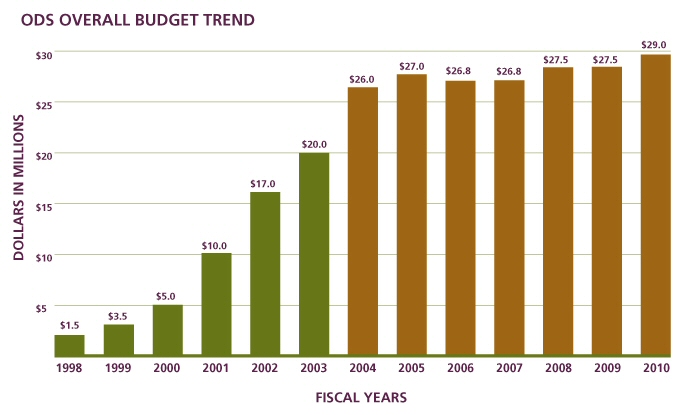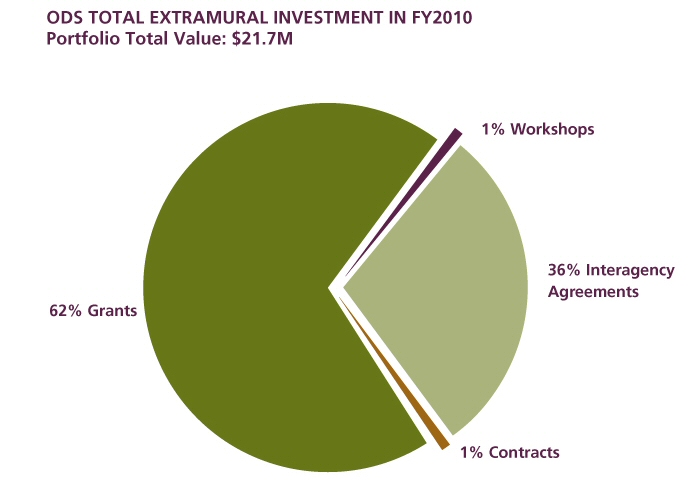Budget
In meeting its mission to strengthen knowledge and understanding of dietary supplements, ODS invests intellectual leadership and dollars. ODS extramural investments can be categorized into four broad areas:
- Research support (to develop new knowledge);
- Research tools (to develop research resources);
- Communications (to disseminate knowledge); and,
- Science–policy interactions (to translate knowledge to public health).
ODS's key activities are grouped into 15 programs under the four categories. An ODS staff member is responsible for overseeing each program and most ODS staff members are active in more than one program. Each program interacts with one or more stakeholder communities, including: research investigators; educators and teachers; health practitioners; research and educational institutions; federal agencies; dietary supplement, food, and related industries; media; consumer and public interest groups; and members of the public. For detailed information, see the section on ODS programs and activities on the ODS Web site.
The ODS budget grew rapidly from 2000 to 2004; since 2004, the ODS budget has been relatively stable.

Figure 1. ODS Overall Budget Trend
ODS's FY2010 budget was $29 million. This budget was largely targeted to extramural investments in research.
In FY2010, ODS awarded $21.7 million to research projects. The distribution of these funds by project type—grants, contracts, and interagency agreements—is shown in Figure 2. The largest allocation was for research grants. ODS does not award research grants directly but selectively cofunds meritorious peer-reviewed research relevant to dietary supplements that NIH institutes and centers submit.

Figure 2. ODS total research portfolio in FY2010
The research areas that ODS supported in FY2010 are shown in Figure 3. ODS cofunded grants with nine NIH institutes and centers and these partnerships are the key means by which ODS supports dietary supplement research. The second largest allocation, accounting for approximately 30% of the ODS extramural budget, was for the development of research tools for dietary supplements. Key partners in the development of research tools were other federal agencies as well as NIH institutes and centers.

Figure 3. Supplement Category Breakout of ODS Cofunded Grants